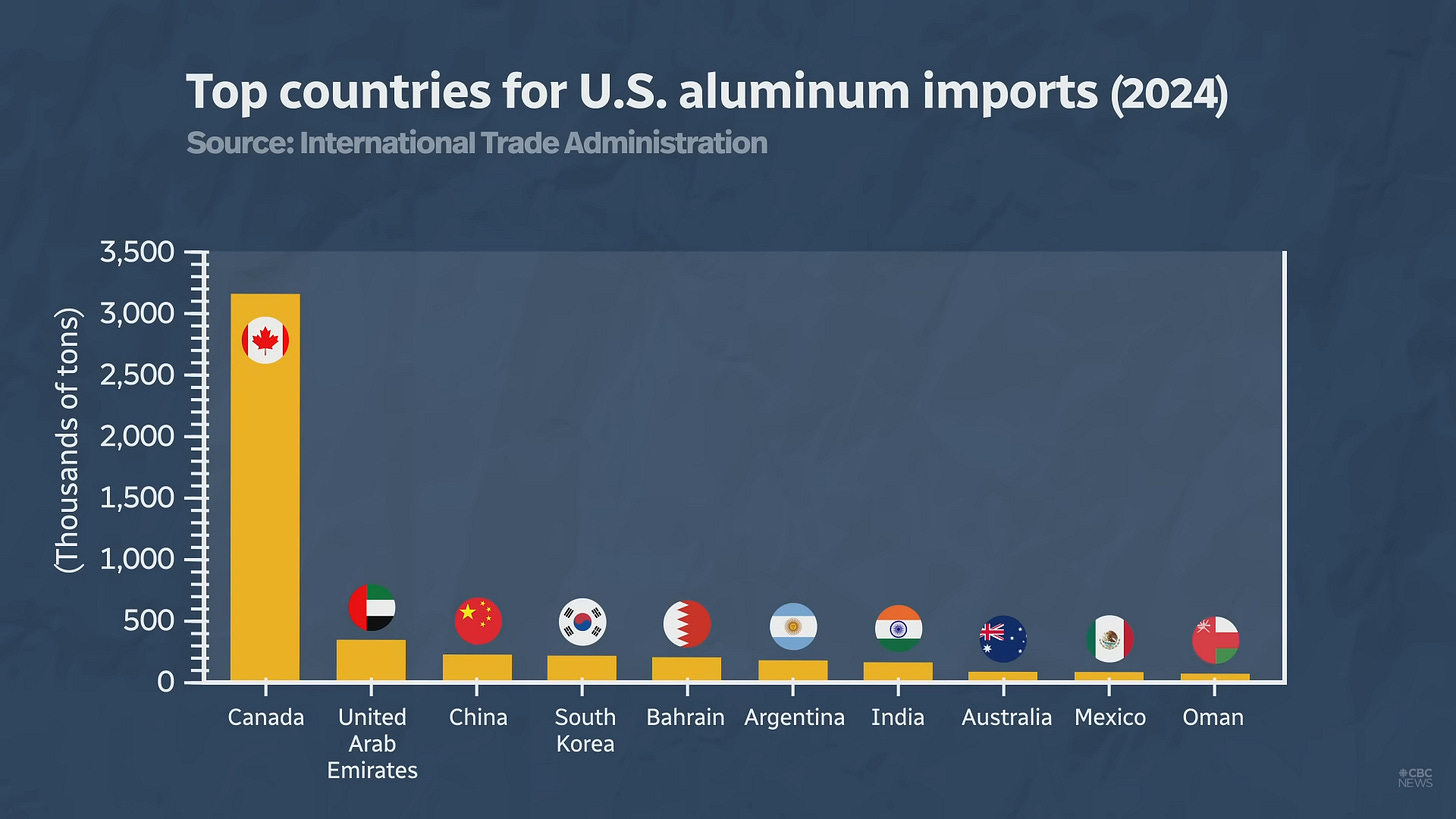Reciprocal tariffs and the hotter-than-expected inflation
This post is served with the purpose of bringing some useful information about the global economy
1. President Trump pledges metal and reciprocal tariffs
The president reveals a plan to impose 25% tariffs on every country importing Steel and Aluminum to the US in March, despite the vague of a date to take effects, driving related markets to the downfall on the same day. Asia ranked first in term of the most dropped market in a week. According to government and American Iron and Steel Institute data, some of the largest sources of U.S. steel imports are Canada, Brazil and Mexico, followed by South Korea and Vietnam. To put this into perspective, Canada accounted for 79% of total imports of primary aluminum metal to the U.S in the first 11 months of 2024, considered as the biggest supplier.
As a result of new pronouncement, most of the crucial markets plummeted, with the lead from Asia-Pacific.
The US has been relying heavily on aluminum imports from other countries and this move is part of Trump’s administration trade strategy, which includes reciprocal tariffs on countries that tax US imports, to reduce trade flows aiming for the return of the US steels. These account for a smaller portion of consumption but are vital for sectors like energy businesses, shipbuilding, and automotive.
“I don’t want US Steel being owned by a foreign country,” Trump said. “All they can have is an investment.”
However, this policy has been tried before in 2018, but it had limited success and ultimately led to increased costs and job losses in the US. In fact, The Peterson Institute for International Economics estimates that Trump's first round of steel tariffs in 2018 created 8,700 jobs in steel but increased costs for everyone who uses steel by about $5.6 billion. The cost per job was $650,000. The US steel production is currently lower than it was in 2017, pre-tariffs. The aluminum production has also decreased by almost 10%. The tariffs are expected to make other products, such as cars, construction materials, and appliances, more expensive.
2. Inflation hiked hotter-than-expected
The Labor Department's consumer price index (CPI) data shows that inflation rose to 3% in January, higher than the 2.9% pace in December. This surge in inflation is expected to send mortgage rates higher, with rates for 30-year fixed home loans averaging 6.89% last week. Rising costs for housing continued to be a major driver of overall inflation, with the shelter index rising 4.4% in January. However, this was the lowest annual figure for shelter inflation in three years.
The statistic also becomes a signal, combined with strong labor market numbers, to be anticipated that there might be a long halt on rate cuts from the Fed despite President Trump's vow to lower prices for consumers.
In contrast with the CPI, US citizens shows vigorous purchase since the lowest 2021 using credit card debt, which peaked at $1.21 trillion it the 4th quarter.
3. UK households keep getting more expensive
UK accommodations witnessed a significant rise by 26% with top 3: Industrial, Apartment and Retail.









